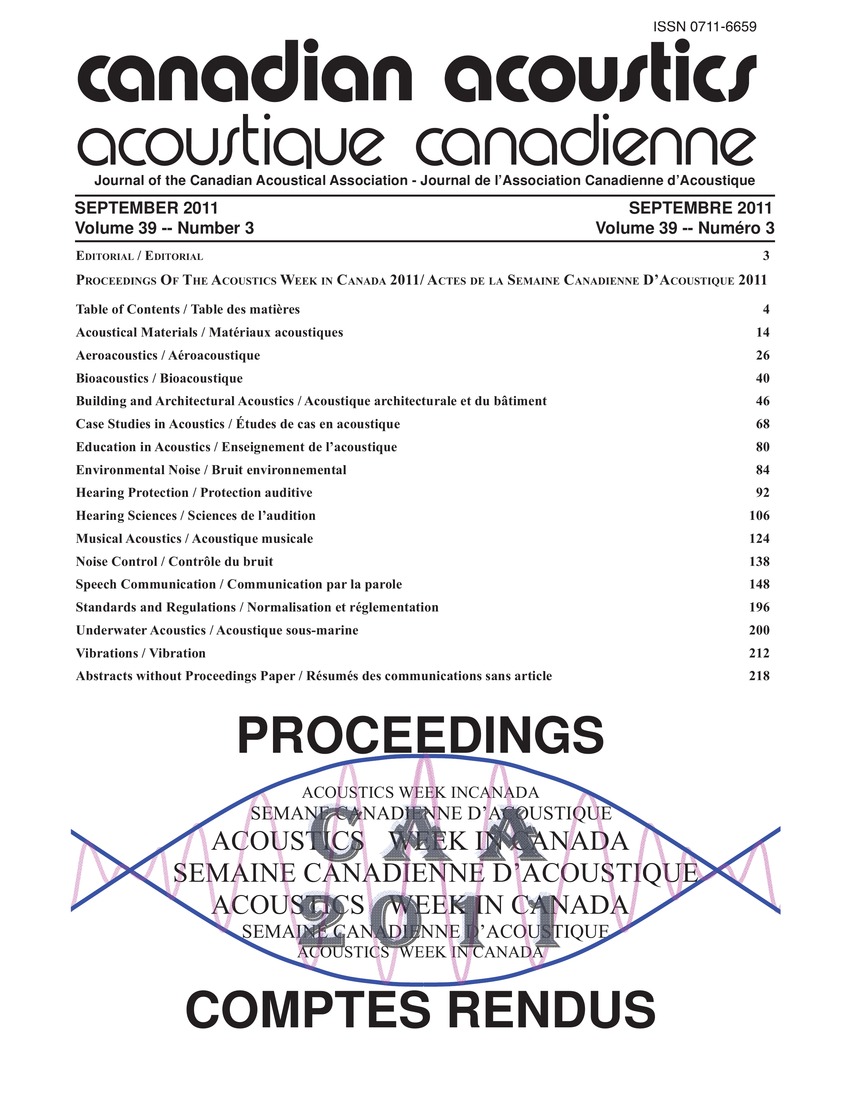Development of an equivalent solid model to predict the vibroacoustic behaviour of earmuff cushions
Keywords:
Architectural acoustics, Porous materials, Air bubbles, Cyanoacrylates, Metal blocks, Solid model, Sound transmission, Vibration experiment, Vibro-acoustic behaviour, Visco-elasticAbstract
A study that examines the relevance of using an equivalent isotropic visco-elastic solid model to capture the sound transmission law of an annular cushion from a commercial earmuff is presented. Ten cushions from a hygienic spare set are studied. They are mounted on a shaker and submitted to the weight of three metal blocks with masses of 1.15kg, 1.65kg and 2.13 kg, representing the force applied by the head band when the earmuffs are positioned on the head. Holes are glued with cyanoacrylate glue, when each cushion was under compression, to evacuate air from it. Vibration experiments were conducted and then cushions were immerged into water to make sure that apertures were completely occluded. Such verification has demonstrated that the sheath is a micro-porous material: micro air bubbles appear around the sheath when cushion are pressed. The foam and the sheath are tested separately under a mass of 0.65kg and compared to a cushion.Additional Files
Published
How to Cite
Issue
Section
License
Author Licensing Addendum
This Licensing Addendum ("Addendum") is entered into between the undersigned Author(s) and Canadian Acoustics journal published by the Canadian Acoustical Association (hereinafter referred to as the "Publisher"). The Author(s) and the Publisher agree as follows:
-
Retained Rights: The Author(s) retain(s) the following rights:
- The right to reproduce, distribute, and publicly display the Work on the Author's personal website or the website of the Author's institution.
- The right to use the Work in the Author's teaching activities and presentations.
- The right to include the Work in a compilation for the Author's personal use, not for sale.
-
Grant of License: The Author(s) grant(s) to the Publisher a worldwide exclusive license to publish, reproduce, distribute, and display the Work in Canadian Acoustics and any other formats and media deemed appropriate by the Publisher.
-
Attribution: The Publisher agrees to include proper attribution to the Author(s) in all publications and reproductions of the Work.
-
No Conflict: This Addendum is intended to be in harmony with, and not in conflict with, the terms and conditions of the original agreement entered into between the Author(s) and the Publisher.
-
Copyright Clause: Copyright on articles is held by the Author(s). The corresponding Author has the right to grant on behalf of all Authors and does grant on behalf of all Authors, a worldwide exclusive license to the Publisher and its licensees in perpetuity, in all forms, formats, and media (whether known now or created in the future), including but not limited to the rights to publish, reproduce, distribute, display, store, translate, create adaptations, reprints, include within collections, and create summaries, extracts, and/or abstracts of the Contribution.


